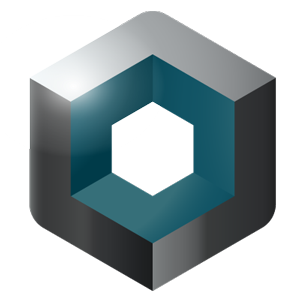As we approach the New Year, it is time for forecasts and predictions. This is not easy, as the healthcare landscape today is changing faster than ever, driven by technological advancements and accompanying social, financial and regulatory shifts. The Editors-in-Chief for HealthManagement.org shared their views on what to look out for in 2020 to ensure you stay ahead.
Alexandre Lourenço
Editor-in-Chief EXEC
President
Portuguese Association of Hospital Managers
Lisbon, Portugal
@LourencoAlex
There are a number of key developments that we should start considering
in the near future, including but not limited to, areas such as innovative care
models, Big Data and Artificial Intelligence (AI), and push on risk sharing
contracts.
Innovative and integrated
patient-centred models of care will continue to emerge. These will be mostly
focused on the community and leveraged by the spread of recent technologies (eg
remote monitoring).
Developments in Big Data and AI
will be going on with baby steps. Although some anecdotal evidence will be
available, we are still unable to meet the expectations. Introduction of new
medicines (mainly in oncology) will take precision medicine to a new level
challenging the health system finances and universal access to care. Payers
will push for value-based healthcare, and new payment models will gain momentum
accordingly.
On the market, heavy technology
suppliers will continue to push for services contracts, trying to abandon the
acquisition model that is highly dependent on capital availability. Also, new
players will enter the healthcare sector without having a real impact on the
market.
Finally, in general, the agenda
on healthcare management ‘professionalisation’ will continue to grow and to
influence policy makers and other stakeholders.

Lluís Donoso-Bach
Editor-in-Chief IMAGING
Head of Diagnostic Imaging
Hospital Clinic of Barcelona
University of Barcelona
Barcelona, Spain
@ldonosobach
Radiologists need to take into account a few key factors, managerial, clinical and operational.
On the managerial front, the overall hospital strategies are becoming more democratised and ways of implementing various imaging modalities are changing. Thus, the need for radiologists to develop leadership skills is going to grow tremendously. Radiologists will need to very clearly convey their viewpoints to a wider team of colleagues, so the training will be required to adapt to this. The matter of burnout stays in the forefront, so we have to effectively assess how Artificial Intelligence and Machine Learning can mitigate it.
Speaking from a clinical point of view, there are several areas to keep our eyes on but one that stands out is, of course, radiogenomics. The exciting trend of genomics and imaging merging will facilitate personalised disease identification leading to more efficient treatment.
When it comes to operations, naturally, the move to value-based healthcare will continue to direct much of our general strategy, practice and treatment.

Tienush Rassaf
Editor-in-Chief CARDIOLOGY
Department Head and Chair of
Cardiology and Vascular Medicine
Westgerman Heart and Vascular Center
University of Essen, Germany
@UniklinikEssen
We have already seen significant advancement in cardiology over the last few years. This trend should continue in the years to come. There will be continued advancement in transcatheter valve technologies and the use of catheter-based interventions should increase in the future. The use of artificial intelligence to identify patients at risk of cardiovascular disease will also increase. This will enable a preventive approach rather than a treatment approach to cardiovascular disease by early identification. AI will also be applied in cardiac imaging to reduce time and to identify any irregularities before complications occur. There will be increased application of precision medicine and using genetic information to assess patients and determine who can benefit from specific interventions. Remote monitoring of patients through wearables and other remote devices with the ability to generate patient data will be a useful tool in future and there will be greater focus on developing improved drug treatments that not only improve patient outcomes but also have better safety profiles.

Christian Lovis
Editor-in-Chief Healthcare IT
Professor and Chairman
Division of Medical
Information Sciences
University Hospitals of Geneva (HUG)
University of Geneva (UNIGE)
Geneva, Switzerland
@chr_lovis
We live in the most exciting time ever. There have never been so many and such swift scientific and technical advancements concentrated in so few generations. But to unlock this power, we now need cooperation rather than competition. We need to better share the learnings, the successes, and the failures.
The most important upcoming trends are:
• Complexity
• Education
• Security
• Ecosystems
The level of complexity in all aspects of healthcare is steadily increasing, with Artificial Intelligence slowly coming into practice, some usages are moving faster ie image recognition, and billing and automatic encoding. Hospitals are actively implementing technologies such as cloud storage and computing, reinforced by the increasing usage of personal devices. In addition, everything gets connected, from fridges to prosthetic materials, and the number of connected devices keeps growing. Care networks, personal records, and advanced planning now require hospital systems to become fully integrated with the rest of the world, locally, regionally, and even globally. As a result, the IT roles and functions mutate constantly while the boundaries of IT department activities are getting fuzzy.
All of the above create another important trend: the necessity of proper education. This ‘world of IT’ requires multidisciplinary approaches, hyperspecialists in multiple fields. These pearls are really hard to find, and even harder to keep.
Security is another matter we will be looking deeper into. IT is becoming the single most critical point of failure for an organisation.
One of the upcoming challenges might be to develop specific strategies to move into the disinformation society. Spam, fake news and cyber attacks are building a new type of pressure and overall threat.






